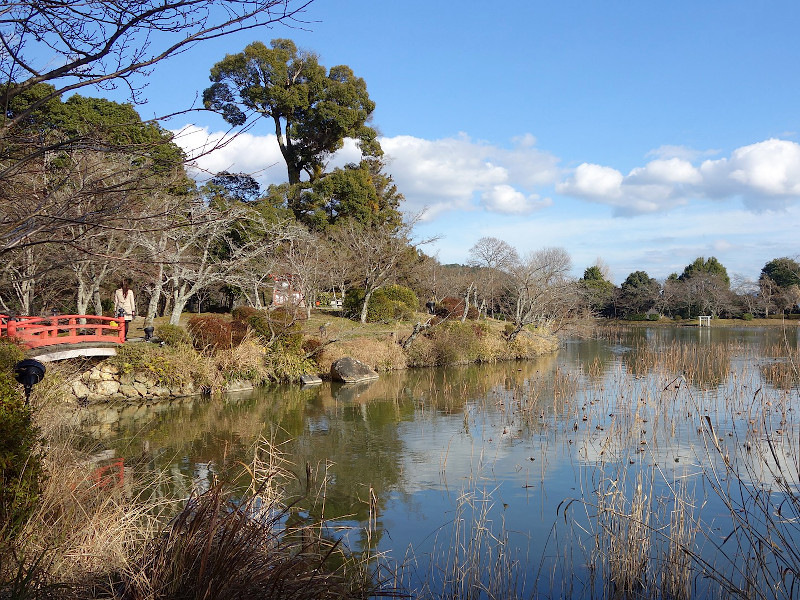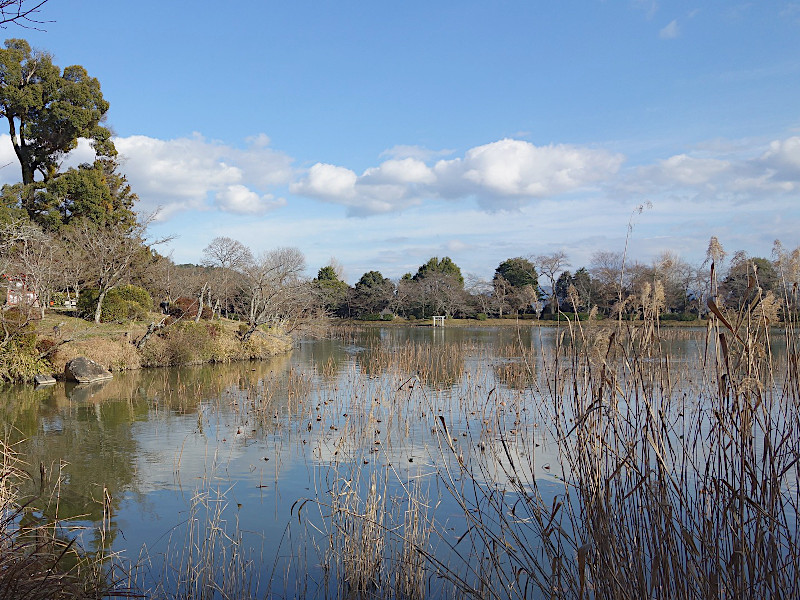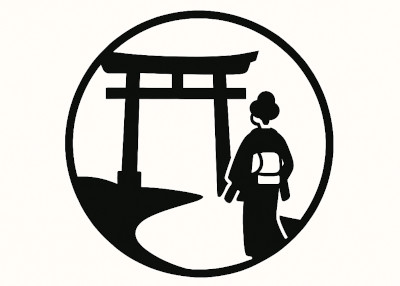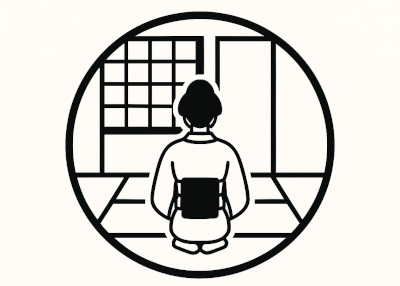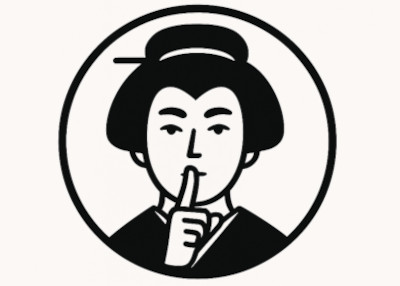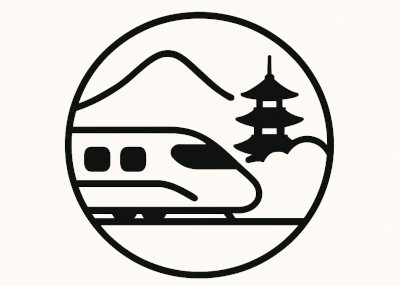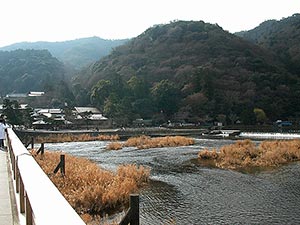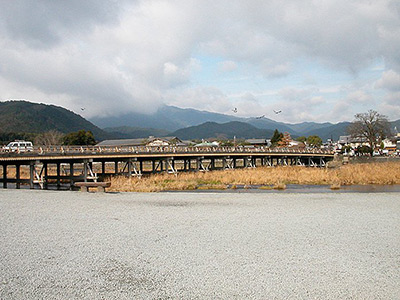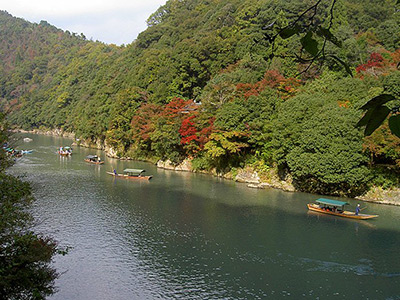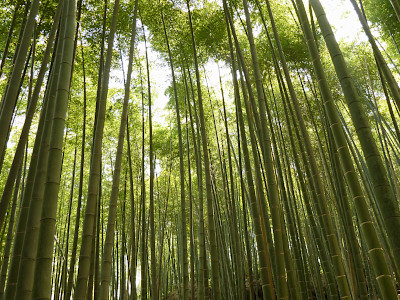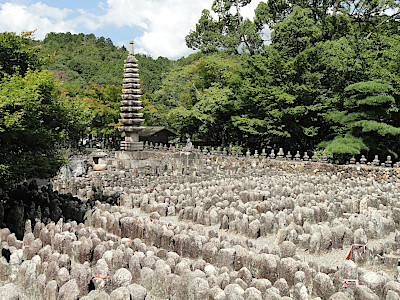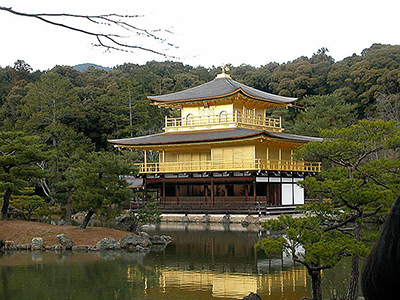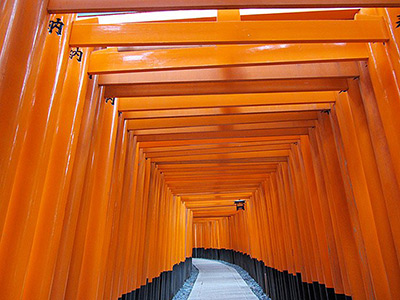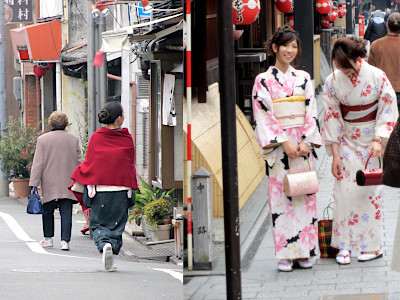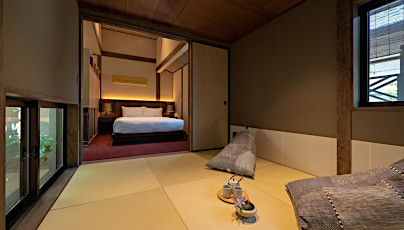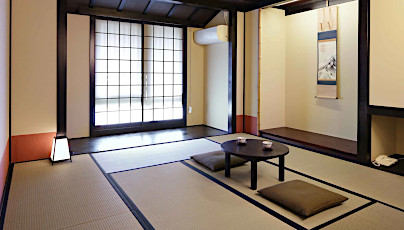Daikakuji Temple in Kyoto
This post can contain affiliate links, which means that we may receive a small commission if you make a purchase using these links.
Facts & Figures
Daikakuji is a large temple complex within the Ukyo district in the western part of Kyoto. The temple is part of the Shingon Buddhism sect, which was founded by monk Kobo-Daishi (774 - 835), also known as Kukai. Daikakuji has a history of nearly 1200 years. It is also the headquarters for the Saga Go-ryu school of Ikebana. Ikebana is a traditional Japanese art of flower arrangement. The temple area includes the huge Osawa pond (designated National Historic Site), a pagoda, beautiful elevated covered wooden walkways connecting the halls, Japanese gardens, and much more.
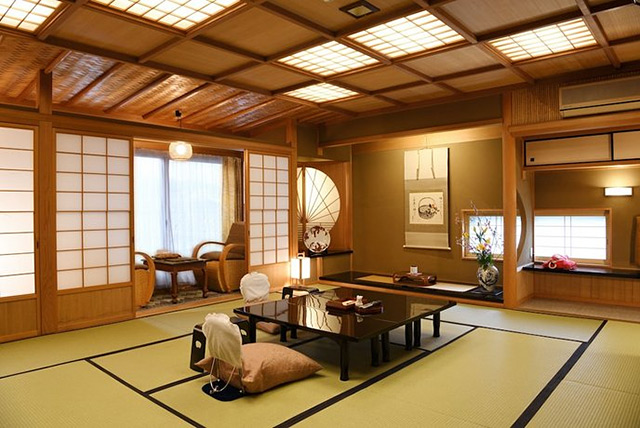 Experience the Ultimate Japanese Hospitality at a Kyoto Ryokan.
Experience the Ultimate Japanese Hospitality at a Kyoto Ryokan.
Find Your Perfect Ryokan Now >
Daikakuji houses many important cultural properties and national treasures. Another highlight is the screens and walls decorated with huge gold foil paintings. The objects of worship at Daikakuji are the Five Wisdom Kings (Godai Myoo), especially Fudo Myoo. The most precious object at the temple is a copy of the Heart Sutra created by Emperor Saga (786 – 842) himself under the supervision of monk Kobo Daishi. Only every 60 years this treasure is shown to the public. The next time will be in 2078. The buildings you see today date back to the 16th century (and later) and some of them were relocated from other parts of the city including the Kyoto Imperial Palace. My tip: Take a stroll around the Osawa Pond during the cherry blossom season in Kyoto (end of March - beginning of April) and enjoy the scenery.
- Daikakuji Temple:
- Opening Hours - 9:00 am to 5:00 pm (last entry 4:30 pm)
- Closed - never, open the whole year
- Admission Fee Odou Area - 500 yen (Adults), 300 yen (High school and Junior high school students)
- Admission Fee Osawa Pond Area - 300 yen (Adults), 100 yen (High school and Junior high school students)
History
The ancestor of Daikakuji Temple, Saga Rikyu-in, was a palace (Imperial Villa) commissioned in 814 by Emperor Saga (786 – 842) during the early Heian period (794 – 1185). In 876, 34 years after the death of Emperor Saga it was transformed into Daikakuji Temple by the order of his daughter Princess Masako (810 – 879). Later many emperors like Emperor Go-Saga (1272 - 1272), Emperor Kameyama (1249 – 1305) and Emperor Go-Uda (1267 – 1324) used the temple as a retirement home. The temple played also an important role during the Nanboku-cho period (1336 - 1392) when peace talks were held here and Japan was shattered by civil war. In 1336 the temple was destroyed by a fire and was later rebuilt. Interesting to know that all head priests here were members of the Imperial Family until the Meiji Restoration in 1868.
Location

Daikakuji Temple is located near the popular Arashiyama district within the Ukyo district in the western part of Kyoto.
Address: 4 Saga-Osawa-cho, Ukyo-ku, Kyoto-shi, Kyoto 616-8411
How to get to Daikakuji Temple?
- 15min from Kyoto Station to JR Saga-Arashiyama Station by JR Sagano Line and
- 15min walk from JR Saga-Arashiyama Station to Daikakuji Temple
Sightseeing spots at the Daikakuji Temple grounds
Top:
Osawa Pond - The artificial Osawa-no-ike Pond is the oldest of its kind in Japan and was an idea of Emperor Saga (786 – 842), a son of Emperor Kanmu (737 - 806). The place is known as one of the three most beautiful moon-viewing spots in the country. The pond has a circumference of approx. 1 km. The role model for Osawa was the Dongting Lake in China created by the Tang Dynasty. The beauty of this place was praised in many classic poetry works like The Tale of Genji. The garden style is called chisen-shuyu, which means a garden should be seen from a boat.
Godai-do Hall - The main hall of the Daikakuji temple was constructed during the Edo period (1603 bis 1868). Inside you will find the main object of worship the Five Wisdom Kings (Godai Myoo). Monks offer also 3times a month transcription sessions where worshippers can copy the Heart Sutra handwritten by Emperor Saga. This process of copying is known as shakyo and monk Kobo-Daishi (774 - 835) started with this ritual. Do not miss the wide wooden terrace with nice views over the Osawa Pond.
Shingyoden Hall - Inside you will find several ink paintings made by artists of the Kano school. These paintings at the fusuma (sliding doors) date back to the 15th and up to the 18th centuries. Do not miss the famous drawing of a hawk.
Shingyo Pagoda - The two-tiered vermilion-lacquered wooden pagoda was built to celebrate the 1150th anniversary of Emperor Saga (786 – 842) creating the Heart Sutra. The architectural style of the pagoda is called tahoto.
Covered wooden walkways/corridors - These wooden corridors make a sound when you walk on them and make it difficult for enemies to hide. The same technique is used for the nightingale floors (uguisubari) at the Nijo Castle in Kyoto.
Shinden-zukuri / Shoin-zukuri - These buildings were used by emperors.
Chrysanthemum Island - Two artificial islands can be found in the northern part of the Osawa Pond. The smaller island is called Chrysanthemum Island.
Festival & Events in Kyoto (dates can change without notice)
April
Miyako Odori (1st - 31th)
The traditional annual spring dance of the Kyoto district Gion Kobu performed by Geiko and Maiko is a must-see on your Kyoto visit. Don't miss the most popular dances the Miyako Odori "Cherry Blossom Dances" or "Dances of the Old Capital" at the Gion Kobu Kaburenjo Theater (located close to Gion Corner).
May
Aoi Matsuri (15th)
The highlight of this festival is a large parade from the Imperial Palace through the Shimogamo Shrine to the Kamigamo Shrine. More than 500 people wearing aristocratic costumes from the Heian Period (794 - 1185). The Aoi Matsuri belongs with the Gion Matsuri and Jidai Matsuri as the three most famous festivals in Kyoto.
July
Gion Matsuri (whole month)
The month of July is full of different events like the Yoiyama - Kyoto's Magical Night (locals in kimonos look at the giant Gion floats the day before the parade) or the famous Yamaboko Junko (float procession on the 17th of July).
September
Moon viewing event at Daikakuji Temple (first weekend)
Enjoy this beautiful moon-viewing event with traditional dances and ceremonies. The event lasts from 5:00 pm to 7:00 pm on three days in a row. The entrance fee is 500 yen.
October
Jidai Matsuri ("Festival of Ages") (22nd)
People celebrate with a large parade between Imperial Palace to Heian Shrine the anniversary of the foundation of Kyoto. App. 2000 participants wearing historical costumes from different time periods. Enjoy this great festival which lasts around 2 hours.
November
Saga-giku Exhibition at Daikakuji Temple (1st - 30th)
This exhibition showcases the various forms and cultivars of this chrysanthemum (Saga-giku) that have been refined over the centuries to reflect the elegant aesthetics of the imperial court culture. The flowers can reach a height of 2 meters. The event lasts from 9:00 am to 3:00 pm. The entrance fee is 500 yen (Adults) and 300 yen (Children).
Where to stay in Kyoto?
Book your Flight Tickets and Rental Car for your Japan trip
Day trips from Kyoto:
Travelers who viewed Daikakuji Temple viewed also:
Top rated - Best Machiya Houses in Kyoto
THE MACHIYA Ebisuya, 192 Ebisuya-cho Shimogyo-ku, Kyoto 600-8062
This 3-star guesthouse got an excellent rating. All 30 individually furnished rooms offer free WiFi, air conditioning, bathrooms incl. toilets, fridges, 40-inch flat-screen TVs, and more. THE MACHIYA Ebisuya is located in central Kyoto.
View on Expedia.com
This 3-star guesthouse got an excellent rating. All 30 individually furnished rooms offer free WiFi, air conditioning, bathrooms incl. toilets, fridges, 40-inch flat-screen TVs, and more. THE MACHIYA Ebisuya is located in central Kyoto.
View on Expedia.com
The Machiya Kazahaya, 570-6 Kazahayacho, Shimogyo-ku, Kyoto, Kyoto, 600-8475
The Machiya Kazahaya offers for all guest rooms free WiFi, air conditioning, safes, bathrooms with toilets, refrigerators, and much more. Enjoy also the beautiful Japanese Garden. Guests gave this property the rating - Exceptional.
View on Expedia.com
The Machiya Kazahaya offers for all guest rooms free WiFi, air conditioning, safes, bathrooms with toilets, refrigerators, and much more. Enjoy also the beautiful Japanese Garden. Guests gave this property the rating - Exceptional.
View on Expedia.com
Kyomachiya Ryokan Sakura Urushitei, 425 Kichimonjicho, Shimogyo-ku, Kyoto, 600-8069
This beautiful 3-star guesthouse offers 32 rooms with free WiFi, air conditioning, bathrooms incl. showers and toilets, refrigerators, and much more. Enjoy also the relaxing indoor public bath (no minerals). Guests gave this property the rating - Wonderful.
View on Expedia.com
This beautiful 3-star guesthouse offers 32 rooms with free WiFi, air conditioning, bathrooms incl. showers and toilets, refrigerators, and much more. Enjoy also the relaxing indoor public bath (no minerals). Guests gave this property the rating - Wonderful.
View on Expedia.com

